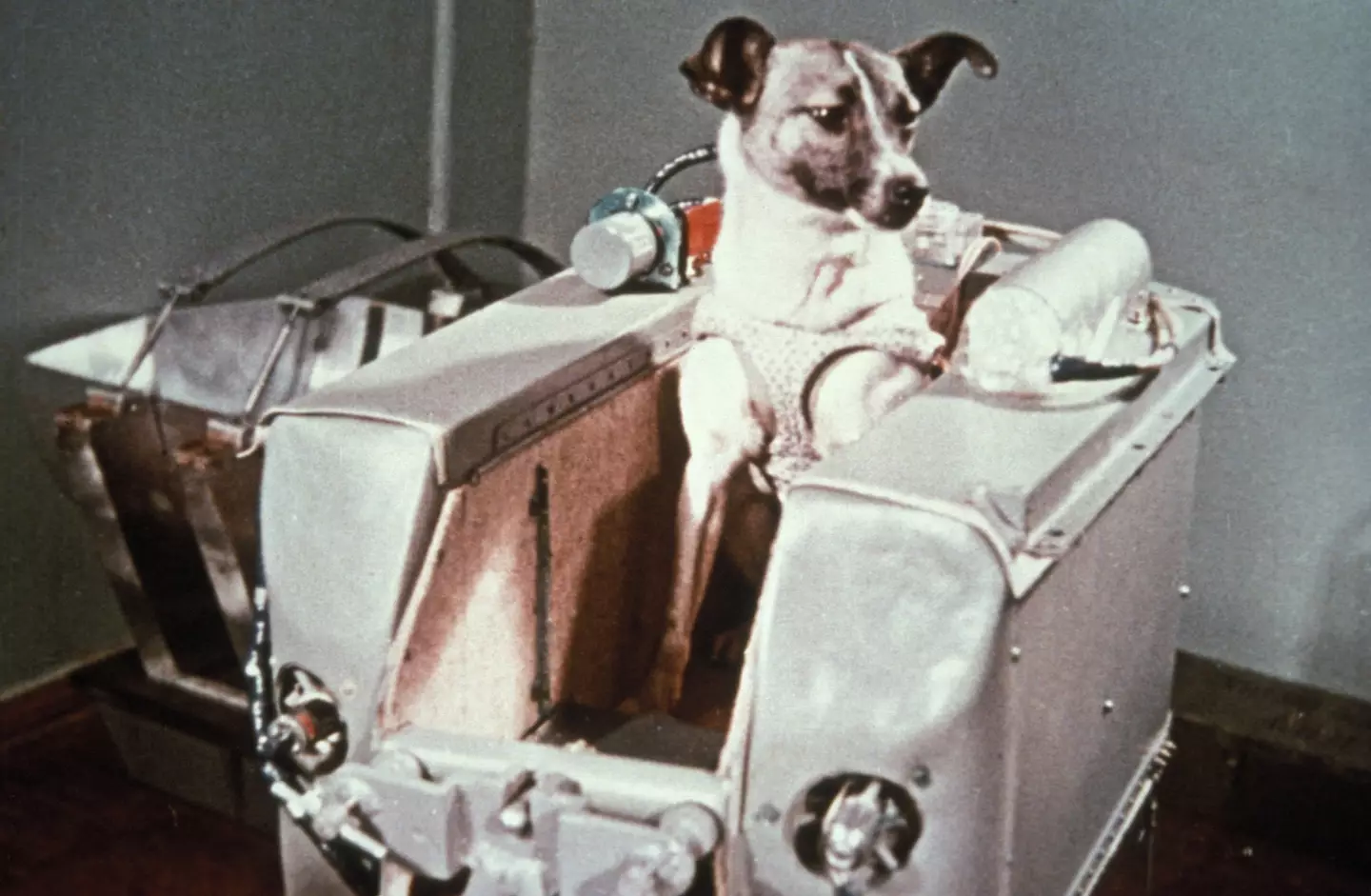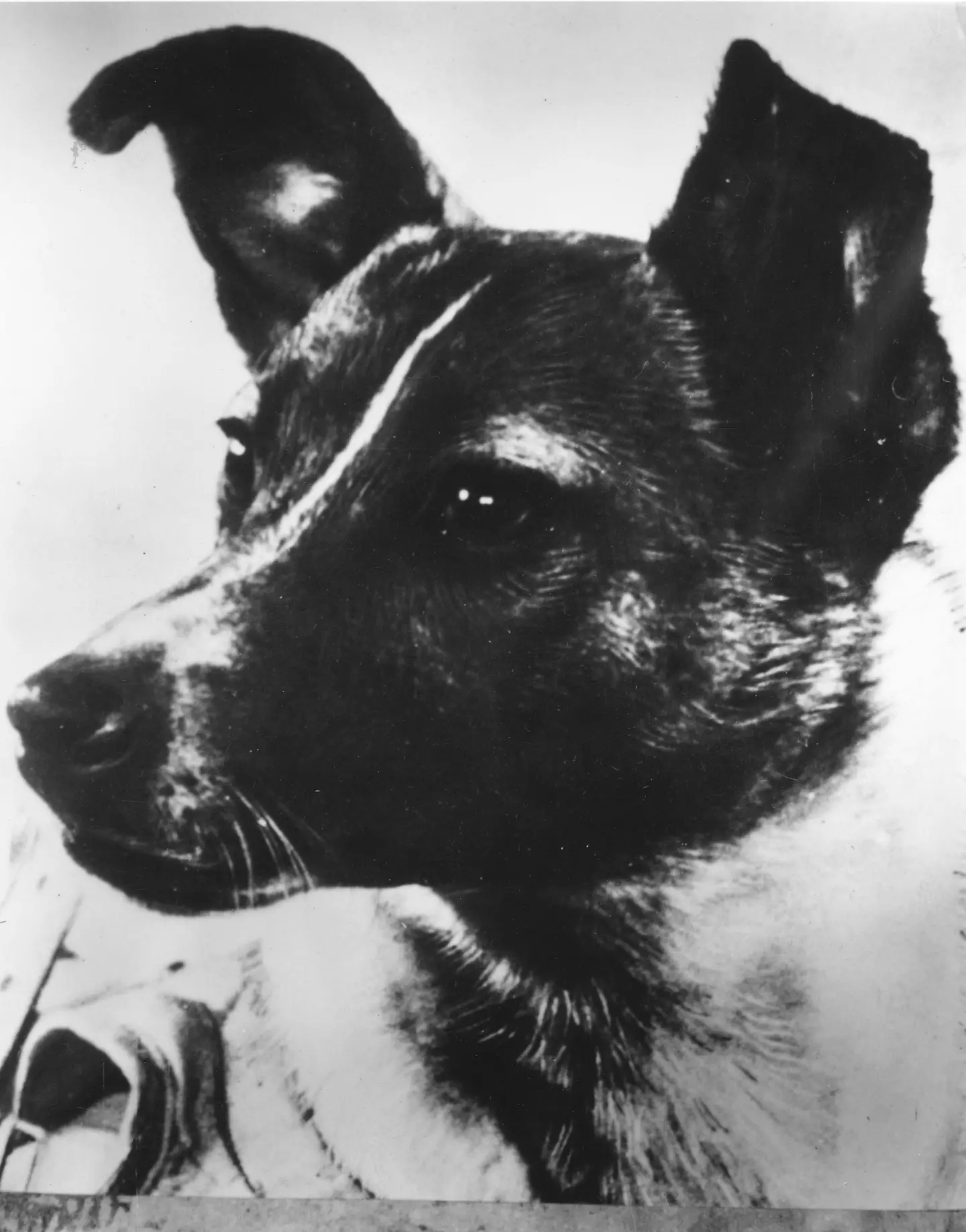The first animal to orbit the Earth had a bittersweet final moment on land before essentially being blasted off to her death.
Tissues at the ready, because the story of Laika the Soviet space dog is a heartbreaking one.
While there's no doubt that space exploration is an incredible feat, it's taken decades of work to get humans safely into orbit.
And in 1957, stray terrier mix Laika was plucked off the streets of Moscow to be sent one a one-way mission that would help inform the future of space travel.
Gentle in nature, the three-year-old canine - originally named Kudryavka, meaning little curly - died alone and terrified, some 940km away from Earth.

Tiny Laika was the first animal to orbit Earth (Sovfoto/Universal Images Group via Getty Images)
But she provided scientists with some of the first data on the biological effects of spaceflight, helping us to better understand what launch and microgravity could do to a human body.
After months of living in confined spaces and being spun on a centrifuge, Laika was strapped into Russia's Sputnik 2 container for the first and last time.
In the middle of the day before launch, Laika was placed into its holding container and it was lifted to the top of the rocket around one hour after midnight on November 3, 1957.
It was a cold night so technicians extended a hose from the ground air-conditioning unit toward the cabin to keep her warm.
The poor, innocent animal was absolutely clueless as to what would happen next.
Engineer Yevgeniy Shabarov recalled the dog's final moments on Earth, saying: "After placing Laika in the container and before closing the hatch, we kissed her nose and wished her bon voyage, knowing that she would not survive the flight."

Laika was launched into space on Sputnik 2 (Encyclopaedia Britannica/UIG Via Getty Images)
She was blasted into space and Sputnik successfully reached orbit, becoming the second ever spacecraft to do so.
Laika made history as the first ever animal to orbit space, but it's thought she was only alive for the first five to seven hours of the mission.
The tiny dog's pulse rate tripled during takeoff and only began to come down during weightlessness.
The Soviet Union gave conflicting causes of death for years, from her suffocating to battery failure of equipment.
But in October 2002, one of the scientists behind the Sputnik 2 mission confirmed the real reason.
Dimitri Malashenkov revealed that Laika had died from overheating and panic by the flight's fourth orbit.

Laika died in orbit (Keystone/Getty Images)
"It turned out that it was practically impossible to create a reliable temperature control system in such limited time constraints," Malashenkov explained in a paper presented to the World Space Congress.
Scientists knew Laika would have died either way around 10 days in due to lack of oxygen.
Still, Sputnik 2 marked a major win for the Soviet Union, providing some of the earliest scientific data from above the Earth's atmosphere for an extended period. It also moved the country closer to winning the Space Race against the US.
After 162 days in orbit, on April 14 1958, Sputnik 2 - and Laika's remains - disintegrated as it re-entered Earth's atmosphere.
Featured Image Credit: Sovfoto/Universal Images Group via Getty Images/MLADEN ANTONOV/AFP via Getty Images






/cdn.vox-cdn.com/uploads/chorus_asset/file/8028811/jbareham_170221_1475_0010.0.jpg)








 English (US) ·
English (US) ·